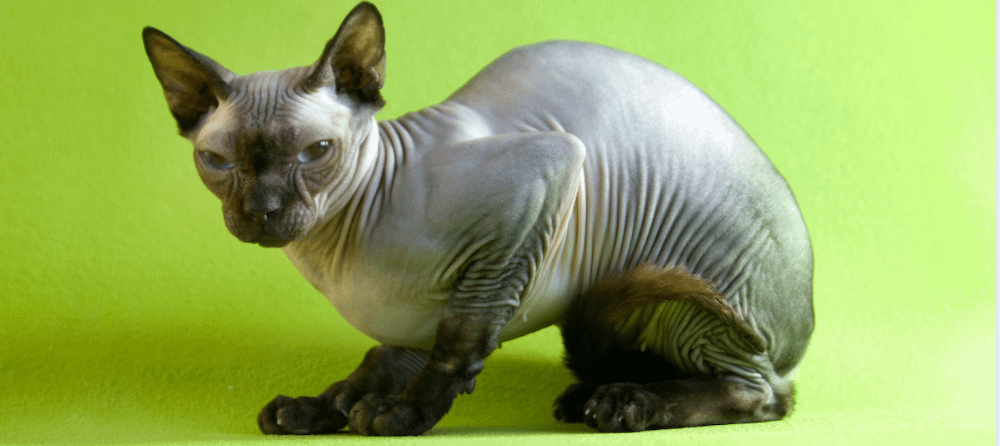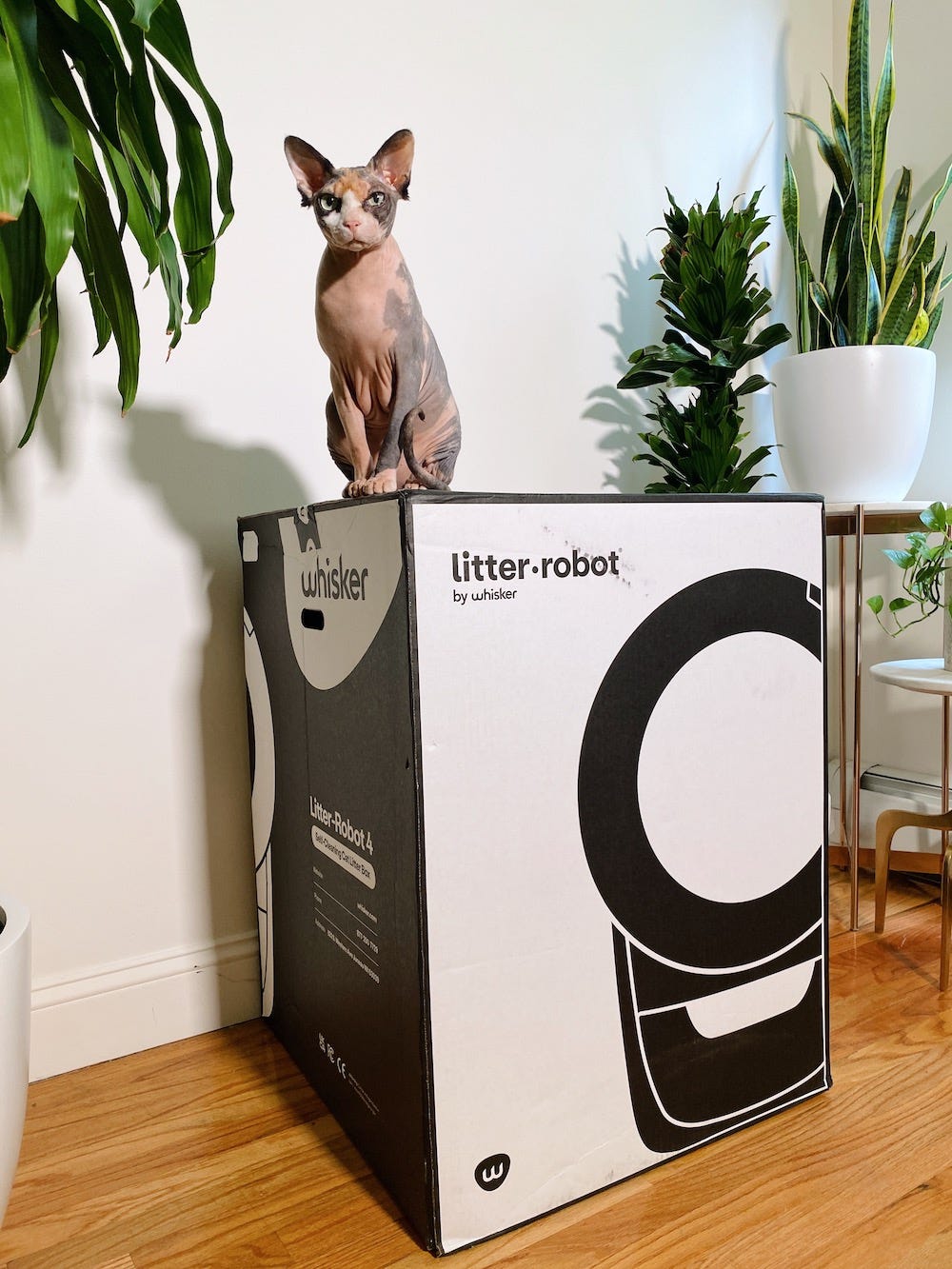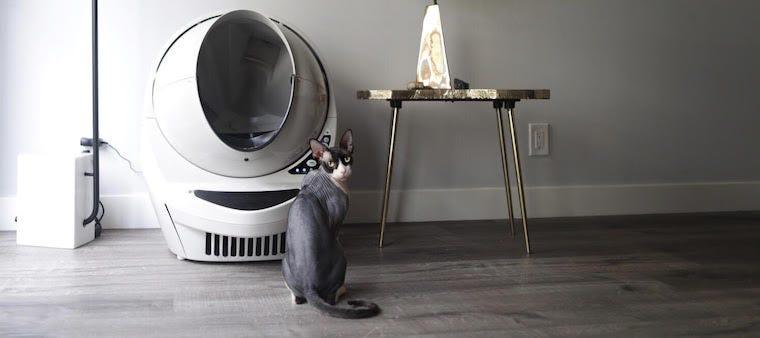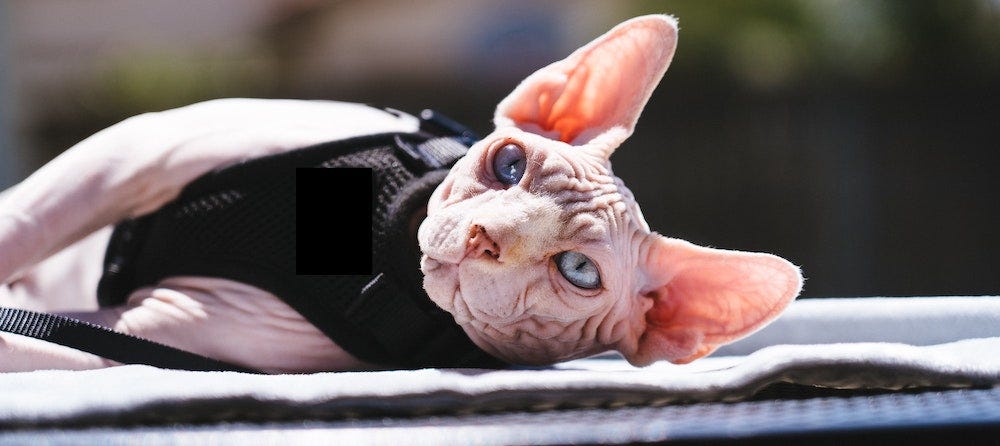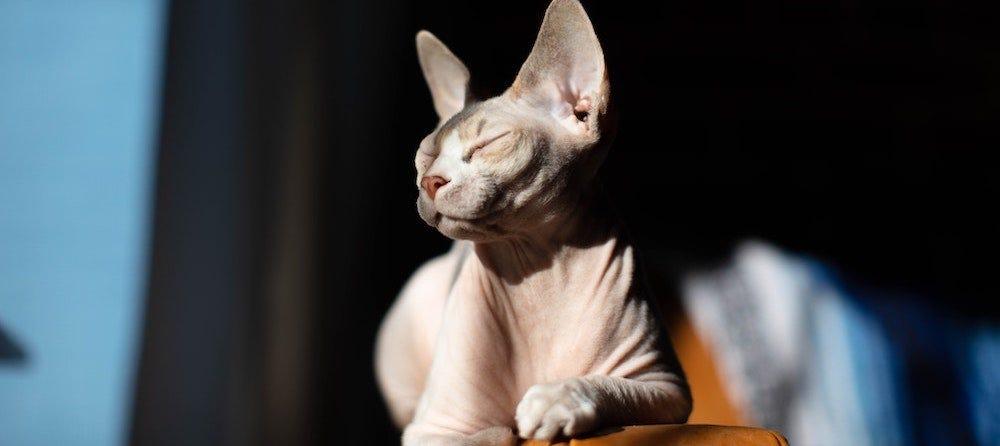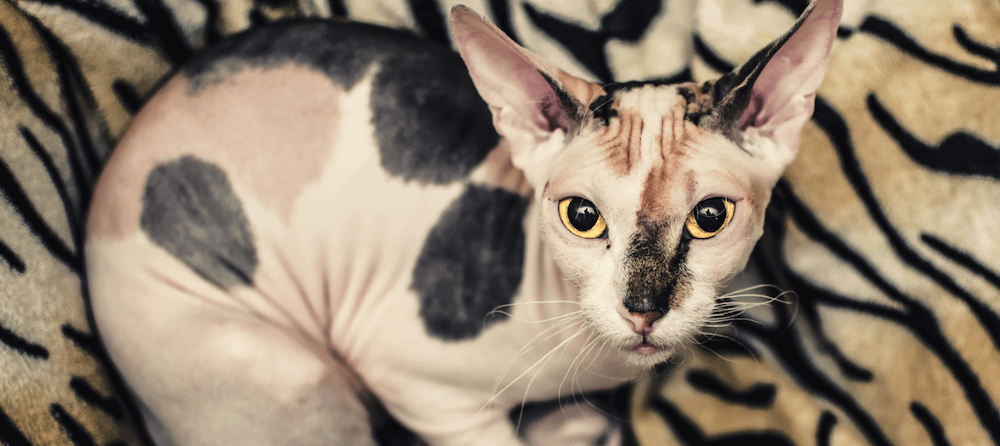If someone asked you to describe a Sphynx cat in one word, chances are you'd say "hairless." Lack of fur is usually the first thing you notice about these cats—but what if we told you they actually do have fur?
A mystical aura seems to surround the Sphynx cat breed, but many of the stereotypes or beliefs about them are quite far off.
These beautiful felines make unique and charismatic pets, but the work that it takes to properly care for a Sphynx cat creates an additional layer of responsibility. If you want to have an easier time adjusting to Sphynx cat parenthood, coming prepared with some research on the breed can help you be successful.
Luckily, you’ve come to the right place. Whatever burning questions you’ve had about Sphynx cats, we are here to help.
Background of the Sphynx cat

While many people assume that the Sphynx cat has been around for hundreds, maybe even thousands of years, roaming with the Ancient Egyptians, that’s not actually the case. In fact, the Sphynx cat breed is fairly young.
To trace the history of this affectionate cat breed, we must start in North America.
The Sphynx cat originated in 1966 from a natural genetic mutation that occurred in a kitten from a Domestic Shorthair litter in Toronto, Canada. This hairless kitten (named Prune) was put into the hands of a mother-son duo who worked with a breeder to continue breeding this mutation by crossing the kitten with a Devon Rex cat.
Soon after, the Sphynx cat became one of the more popular cat breeds, standing out with unique features that were stark against their bubbly personality and charming sense of humor.
While hairless cats themselves have existed for many years and are adored for their interesting features, Sphynx cats are the first to be specifically bred to look hairless. This may not be everyone’s cup of tea, but if you are lucky enough to know a Sphynx cat, you’ll know just how loveable and playful they actually are!
Attributes of the breed
If you aren’t familiar with Sphynx cats, the breed might seem a bit mysterious to you. They have long, lengthy, slim bodies, big eyes, big ears, and so. many. wrinkles. They typically live between 8 and 14 years and need loads of attention daily. Getting to know a bit about the Sphynx cat can be immensely helpful if you are trying to figure out what breed is best for you.
Every cat that you come across will be different, with their own personality, their own likes and dislikes, and their own history. All of these factors play a role in how your Sphynx cat will behave, but there are some basics that are often seen across the board.
So, how big is the Sphynx cat?

The Sphynx is long and lean, with a long tail and long limbs. (The operative word being long, long, long.) These cats flourish in many environments; they can adjust well as long as they stay warm. They are considered small- to medium-sized cats, ranging from 6 to 12 pounds.
These cats pack a big personality. Read on to learn more about why they capture our attention.
Physical characteristics
Sphynx cats may look hairless, but they actually can have fur. It’s just really fine hair that feels similar to peach fuzz. These felines do not have eyelashes or whiskers, and they have many wrinkles throughout their arms, body, and head.
Other notable features of Sphynx cats are their large ears, muscular bodies, and prominent cheekbones.
Even though the Sphynx is pretty good at regulating their body heat and often feels very warm to the touch, they do not fare very well in cold weather due to their general hairlessness. They can get cold quickly and enjoy being snuggled up in soft beds when relaxing. Because of this, it’s best that your Sphynx cat stays indoors where they can stay safe and toasty.
A range of coat colors
Sphynx cats can either be solid colors:
- White
- Black
- Brown
- Red
- Lavender
- Cream
- Silver
- Blue
Or patterned:
- Tortoiseshell
- Bicolor
- Tricolor/Calico
- Tabby
- Mink
- Shaded
Each cat will have their own unique characteristics, but when people are searching specifically for a Sphynx cat, they know what they are looking for.
Personality

When it comes to personality, most Sphynx cats have a whole lot of it. Despite their mysterious look, they are extremely friendly and need a lot of attention. You might find that your Sphynx cat is prone to getting into trouble and being mischievous when they get bored, but that’s a part of their inquisitive nature.
Sphynx cats are also extremely talkative and opinionated. They will argue with you for days until you can figure out what they need from you. They are very energetic and benefit from loads of enrichment activities.
You can feel confident about spending time away from your Sphynx or leaving them at home while you are at work. But when you get home, expect that they are going to be pleading for some attention.
If you don’t want a cat that is following you around all day, then this is not the kitty for you. Sphynx cats are chronically curious and want to be in your business wherever they can be.
When they do settle down, they will happily follow you to the couch to cuddle up on your lap and get some love. They have a calm demeanor, which makes them excellent therapy pets.
Typically, Sphynx cats get along well in family settings and around other animals. Of course, with any pet, you should make sure you do slow introductions between them and children and other pets, so you are able to set boundaries and make sure the interaction goes smoothly.
Common health issues
Knowing the ins and outs of your pet’s health background means that you can provide them with the utmost care, catered directly to their needs. The Sphynx breed is unfortunately prone to some minor health complications. These are usually fairly manageable if you keep a watchful eye on them.
For starters, because the Sphynx cat is “hairless,” they do tend to struggle with skin-related issues. They can develop urticaria pigmentosa, which causes crusty sores on the skin. Additionally, you should make sure that your Sphynx has proper sun protection; burns and over-exposure could be dangerous, as these cats have a higher risk of developing skin cancer.
You’ll want to make sure to keep up with all vaccinations that your cat requires, as well as provide them with proper dental health care.
Grooming
The grooming of a Sphynx cat might seem like a breeze because they have no fur coats, right? Wrong!
In many ways, having a Sphynx cat means that you are going to spend more time making sure their skin is healthy and free of oil build-up. You should wipe down your Sphynx once a week or when you notice their coat becoming greasy.
You’re also going to want to have a litter box that reduces odors and that your Sphynx cat will find comfortable.
To Sphynx, or not to Sphynx?
Getting a Sphynx is a big responsibility, just like getting any other pet. The difference is that many people will view your pet as exotic or intriguing, and you have to be prepared for the endless questions you get about your cat. People will want to pet your Sphynx, take photos of them, and maybe even pick them up.
Obviously, we all love talking about our pets and could likely do so for hours on end. This is a great opportunity to help educate others on how special Sphynx cats are and make sure that potential pet parents are ready for such a commitment.
If you want a loving, affectionate, regal, and mysterious pet, the Sphynx is the cat for you. They will fit beautifully into your life, as they are adaptable and smart felines. If you’ve been looking for a sign, this is it!
Sources:
- The Naked Truth: Sphynx And Devon Rex Cat Breed Mutations In KRT71 | NCBI
- Hypertrophic Cardiomyopathy | Cornell University
- Case Report Feline urticaria pigmentosa in three related Sphinx cats | Western College of Veterinary Medicine
Photo credits:
- @octaviaplach
- Tengyart via Unsplash
